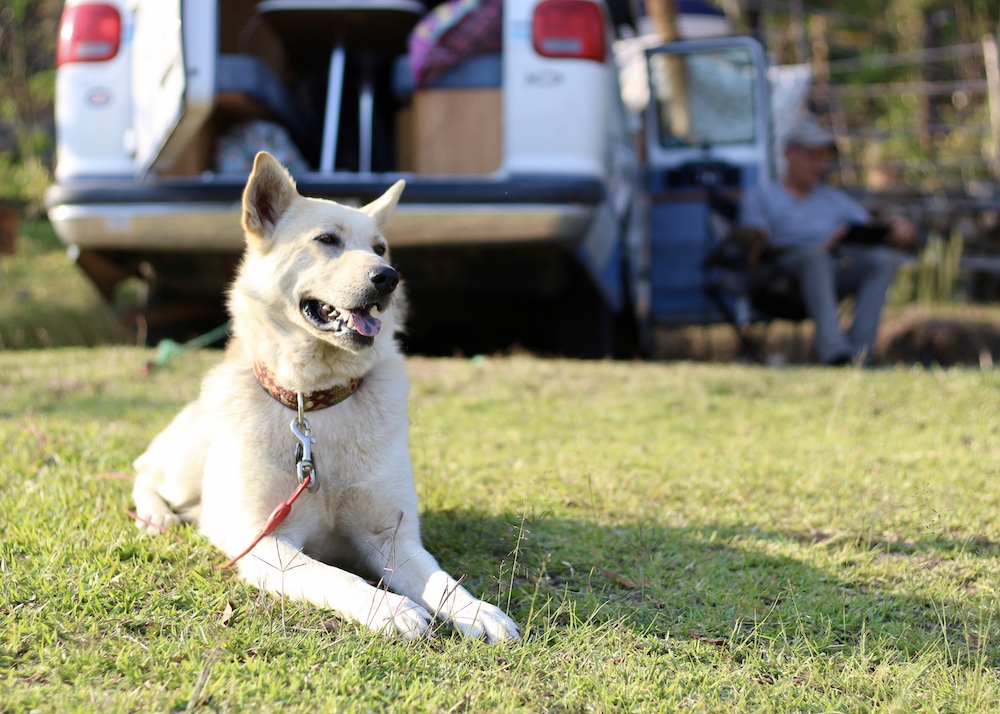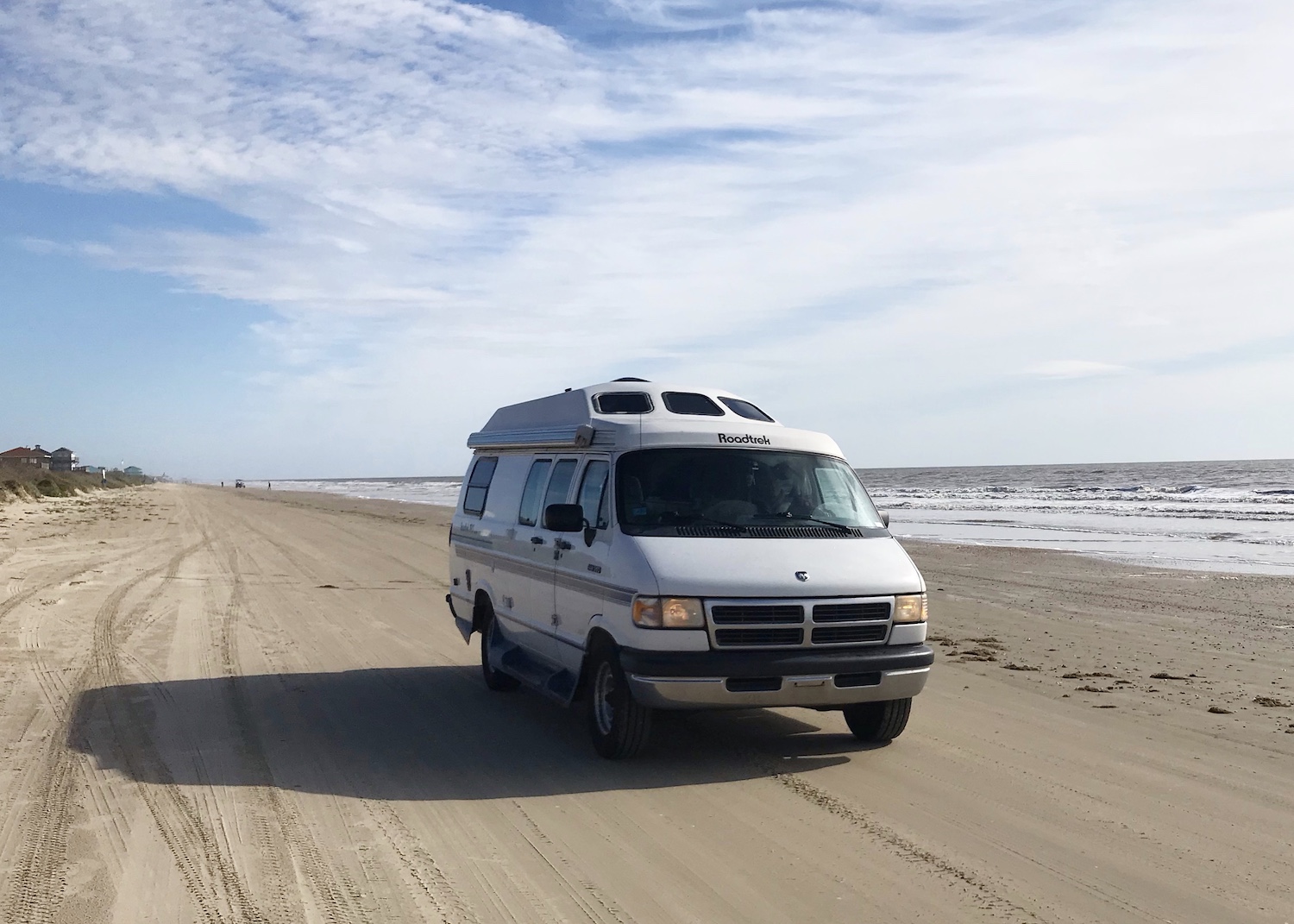We are Natalie & Marc – a couple of Quebecers travelling through North and Central America with Walter, our 70-lb adventure mutt and best furry friend.
For the last 3 years, we’ve spent roughly half of each year living and travelling in our van, ‘Slow Sally’ – our vintage 1994 Roadtrek dog-friendly van. We choose to travel overland in a van because it’s the best way to go on epic adventures and bring Walter along for the ride.
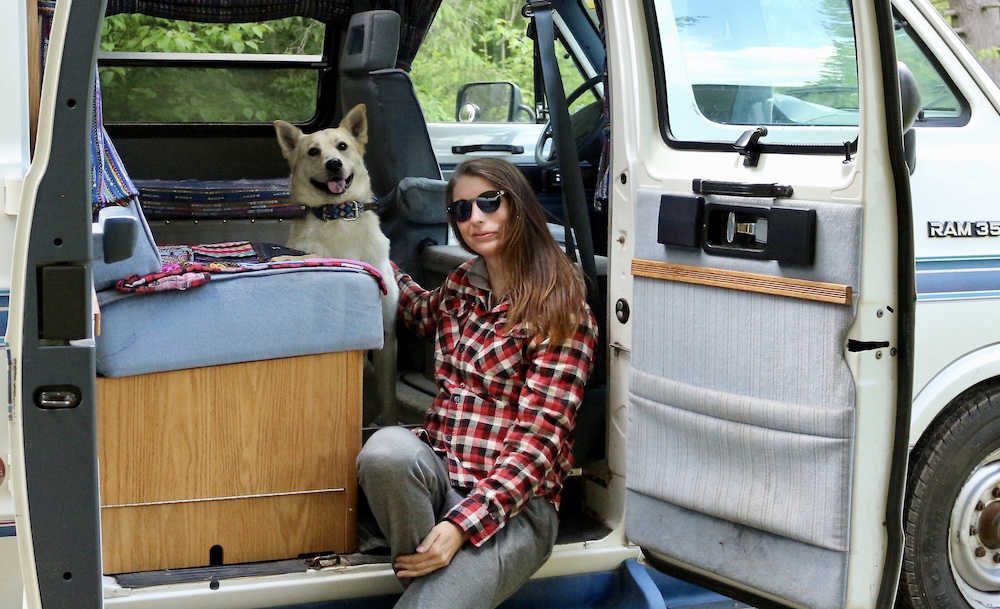
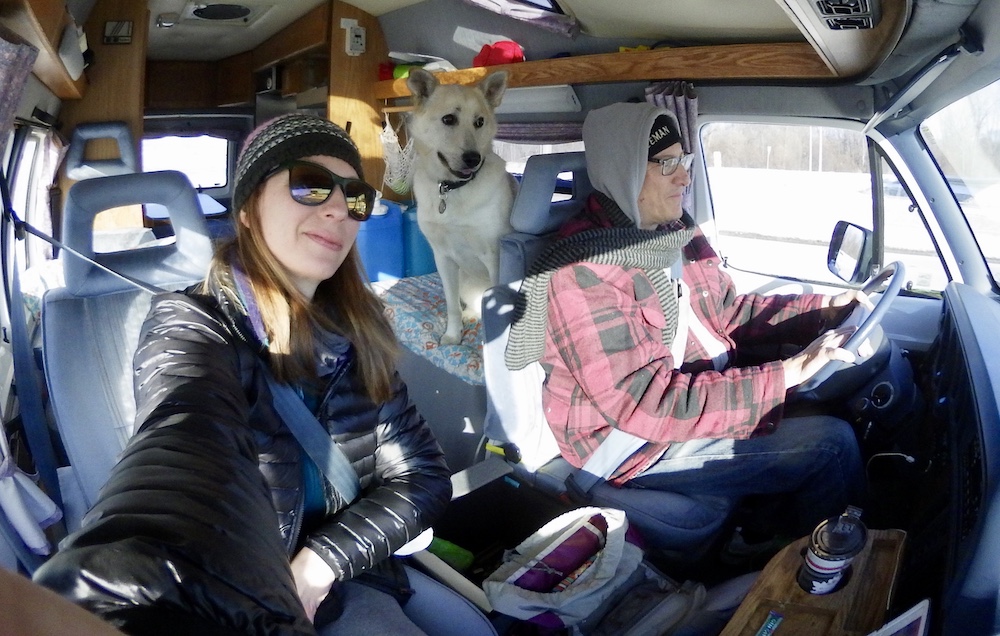
For me and Marc, long term travel without Walter is unthinkable. And like us, many vanlifers are opting for this travel style so that their furry friend can join them on their voyages. However, despite all the joy and adventure that travelling with a dog can bring, there’s no doubt that it makes vanlife and travel more complicated. So, based on our experience travelling with Walter, we’ve written a 3-part series on how to travel in a dog-friendly van with your furry best friend.
PART 1: CHOOSING AND CUSTOMIZING A DOG-FRIENDLY VAN
Deciding on the Right Size of Dog-Friendly Van
Size matters. If you don’t already have a van, one of the most important considerations will be choosing a vehicle that’s the right size for your family and your dog. If you have a small dog, it likely won’t affect the size of van that you’ll need. However, if you have a medium or large dog (or more than one dog!), it may mean that you’ll want a van that’s bigger than what your family would otherwise require.
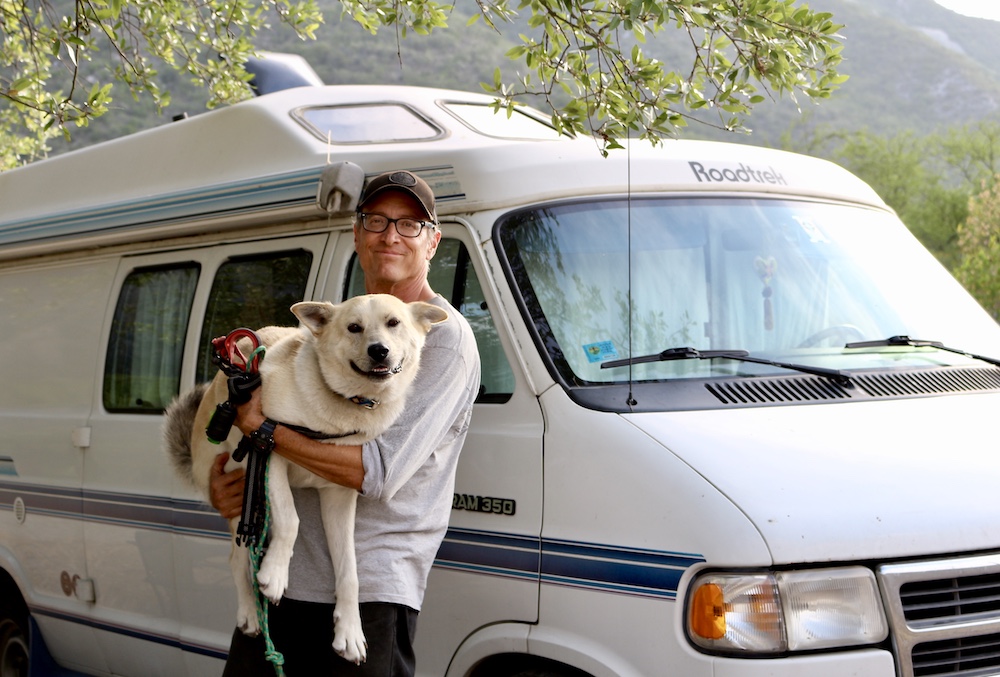
Marc likes small, fuel-efficient vehicles and when we were looking for a van, he was really keen on the Roadtrek 170 and GMC Safari Condo vans, both of which were about 17 feet long. Although I liked the small vans too, I managed to convince him that for extended travels, they’d be way too small for the three us. We’re both so relieved that we chose the 19-foot Roadtrek. It’s big enough to accommodate us, Walter and all of his food and accessories but small enough to fit in a standard parking space.
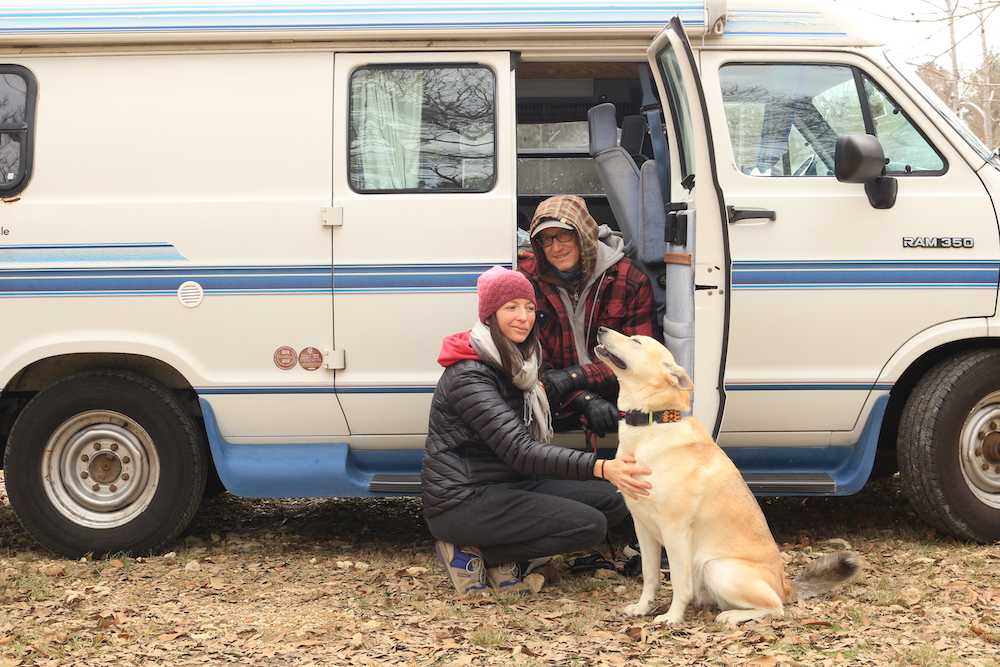
Choosing and Customizing the Perfect Interior Layout
Whether you’re shopping for a van, launching into a complete van build or just renovating the interior of an already built-out van, some of the most important things to consider for the layout include:
- Is your dog going to sleep with you in the bed or does he need his own bed/sleeping area?
- Where is a convenient spot to store his food, toys, leashes, bowls, etc.?
- Does your dog like to be up close to the action when you’re driving or is he happy to snooze on the floor or in the back of your van?
- Will you be leaving your dog alone in the van often and if so, does the van need to be well insulated to protect him from heat and cold? Do you need a heater and/or air-conditioner?
- Is your dog a heavy shedder? If so, will fur be easy to remove from the floor, curtains, seats, etc. and will it show?
Many of our van renovations were made with Walter in mind; here’s a list of the most important ones.
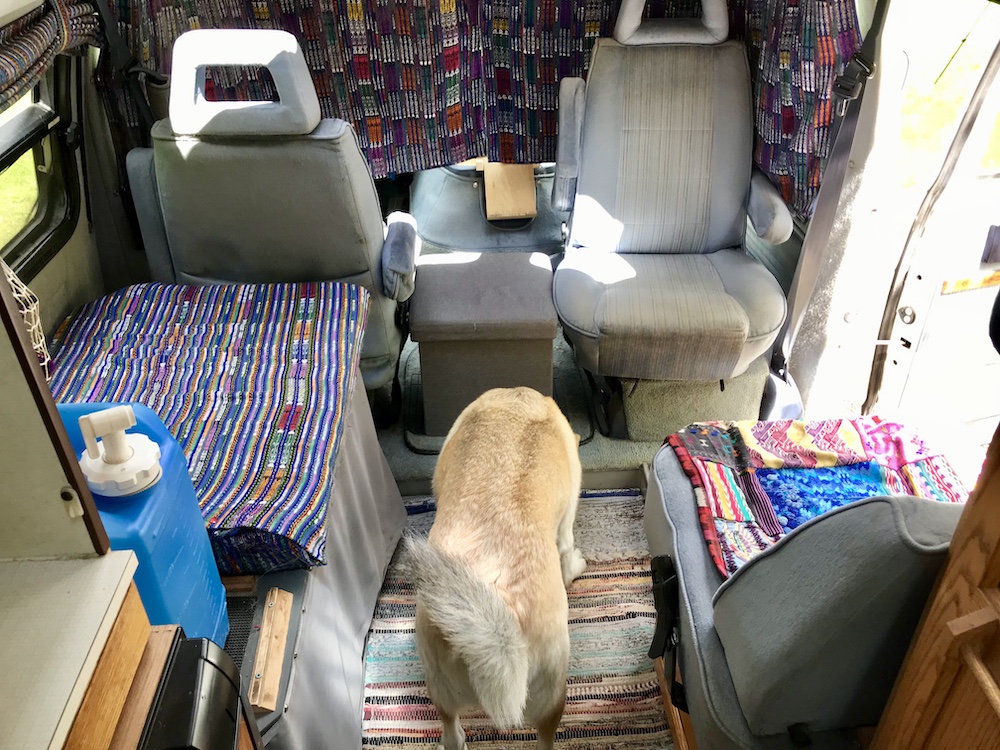
A Sweet Dog Bed:
Walter is obsessed with being part of the action and insists on being as close to the driver’s seat as possible when we’re on the move. For this reason and because we didn’t want Walter sharing a bed with us (sorry buddy… but our bed is already too small!), we decided that he would need his very own space near the front seats. Our Roadtrek came with two rear passenger seats that we didn’t need so we converted the one behind the driver’s seat to a dog bed.
From his bed, Walter has a cushy spot from which he can sit and supervise our driving and navigation to his heart’s content. This renovation created a large storage area beneath the dog bed, which accommodates 3 large storage totes: one for Walter’s food and accessories; one for our sporting goods; and one for extra pantry items. As an added bonus, the bed platform is big enough to squeeze in our 20-L drinking water container.
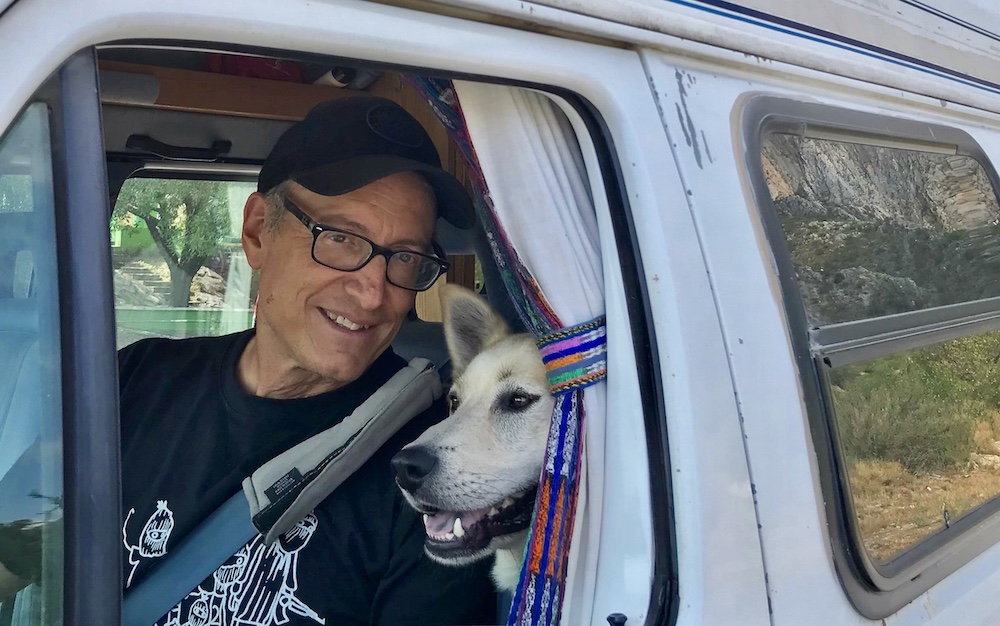
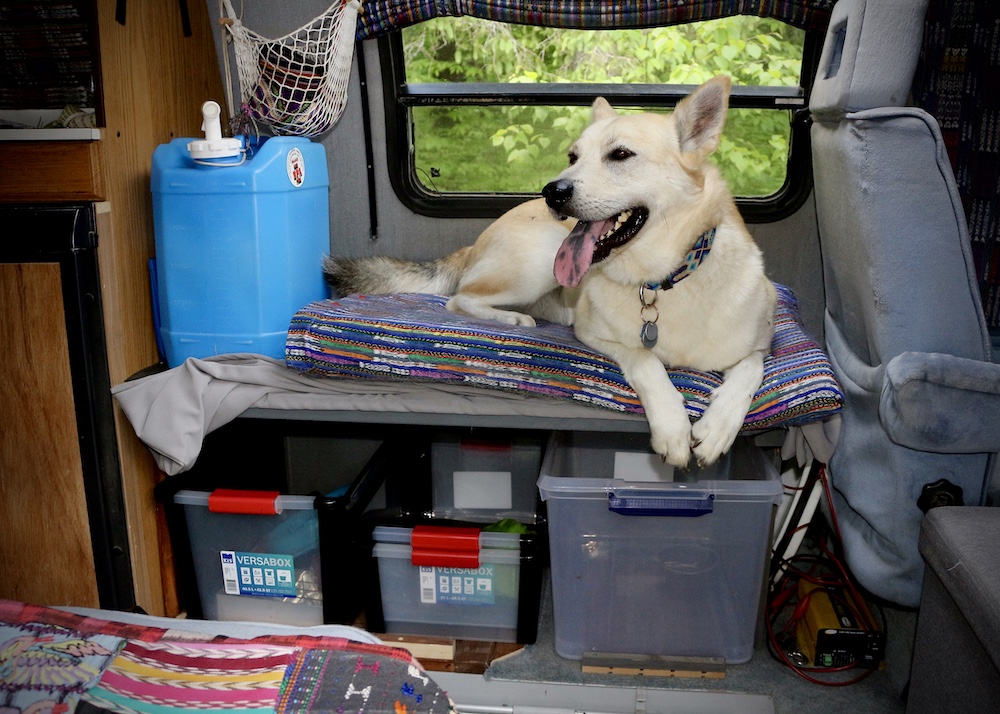
An Ottoman and Blockade:
We found a perfect-sized ottoman to place between the two front seats for accessible storage. It’s a great place to keep our snacks, maps, travel guides and important papers. It also doubles as a blockade for those moments where Walter decides he wants to get a little too involved with what’s going on in the front seat.
A Non-Sticky Interior:
Slow Sally came with interior carpeting everywhere… including on the fridge (…oh, the 90s!). All that carpet served no other function than to collect dirt and fur and absorb dog vomit (it happens). We’ve replaced most of the carpet with a long throw rug that can easily be washed and shaken-out. One of our next projects will be to remove the remaining carpet and replace it with vinyl flooring. The less soft-sticky surfaces, the better!
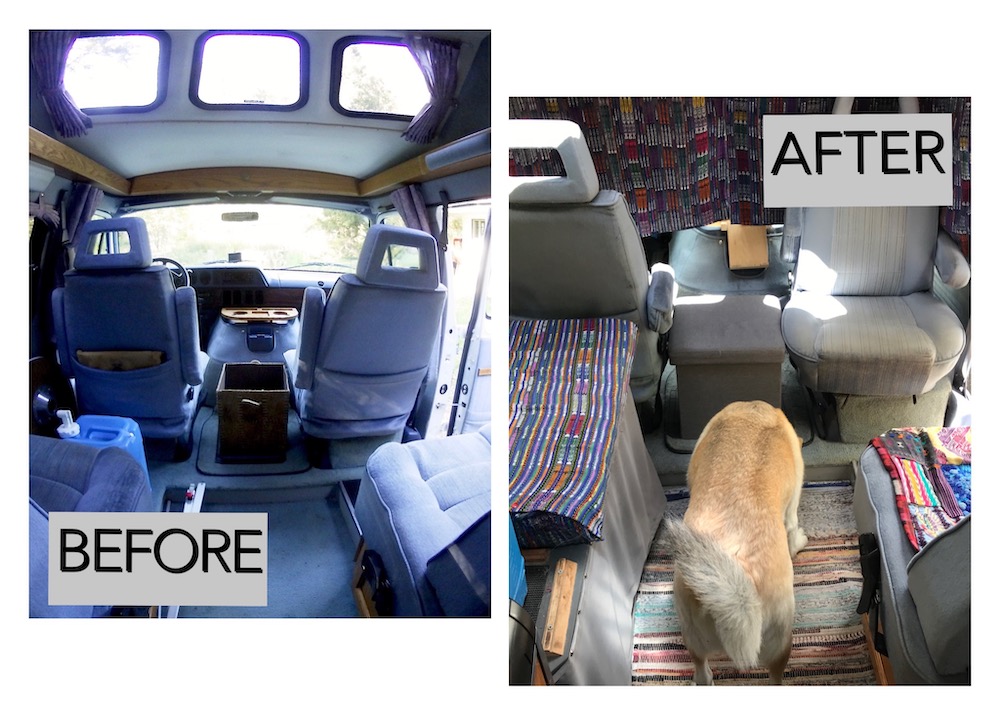
Stay Tuned for Part 2!
Once you’ve chosen and customized a van that works for your family and your best furry friend, it’s time to go on an adventure! Stay tuned for part 2 in the series, where we’ll be sharing our advice on finding the best dog-friendly campsites and activities.
